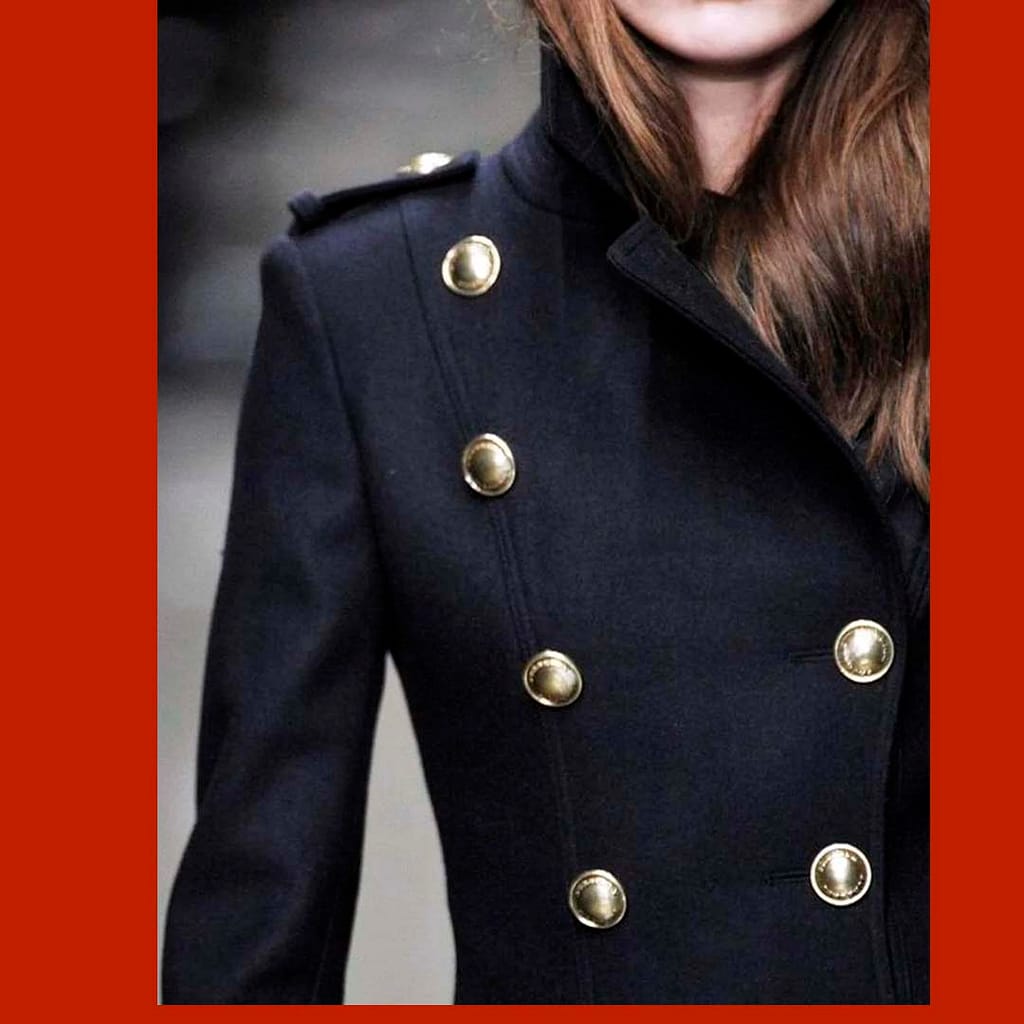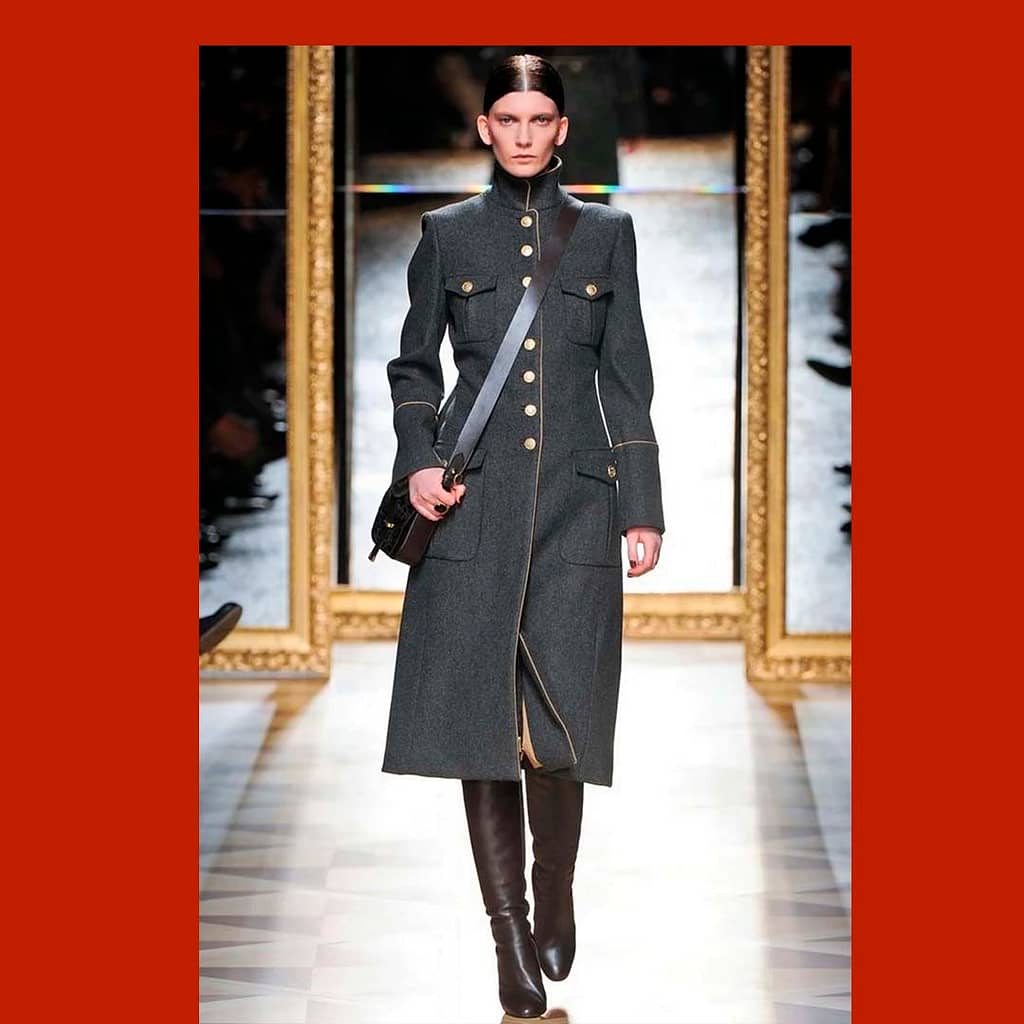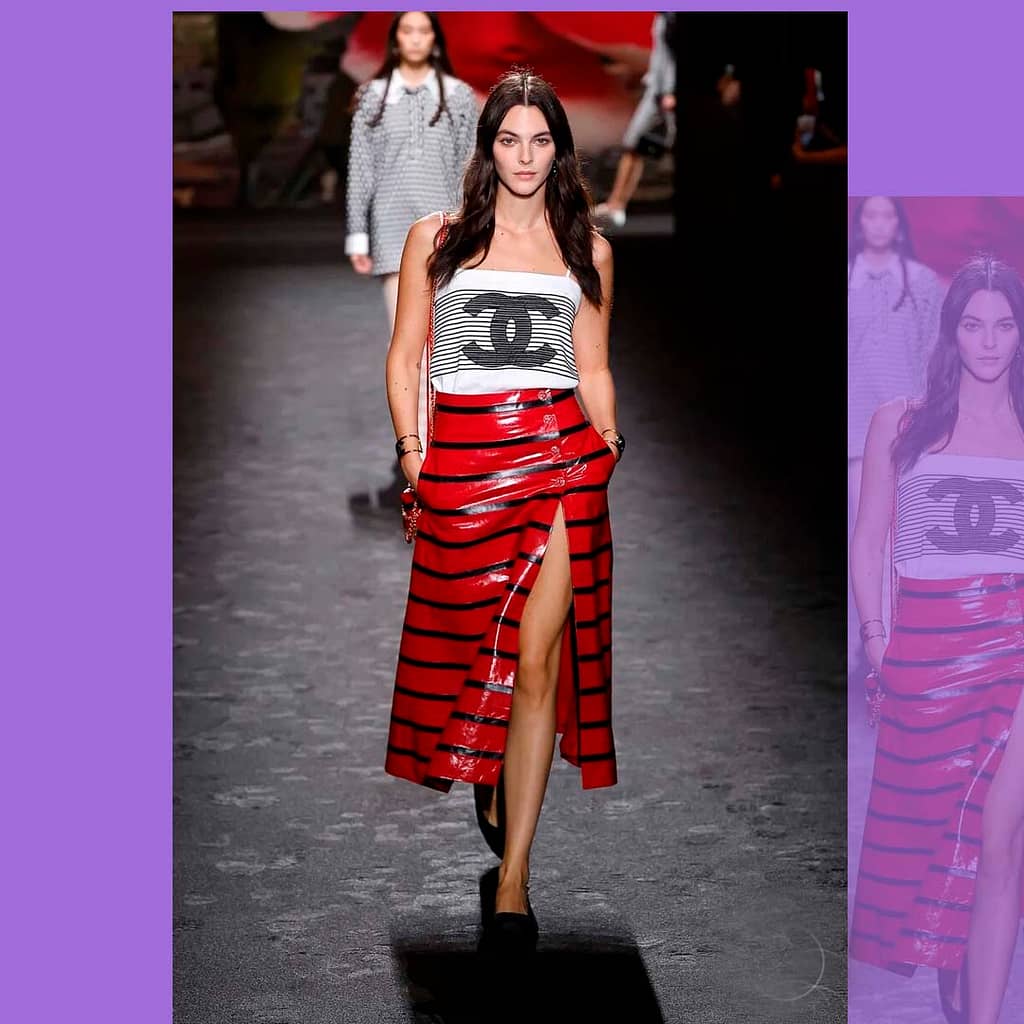

Can a jacket whisper stories of battlegrounds and ballrooms at once? The military aesthetic in women’s fashion answers with a salute. Epaulettes mark shoulders like exclamation points, brass buttons gleam like dawn, and tailored lines stand at attention. Yet beneath the discipline breathes velvet rebellion: order cohabiting with audacity. When a woman ties an olive trench, she is not borrowing power—she is rewriting its grammar.
Warlike Femininity
What happens when softness sharpens its edges? Warlike femininity is no oxymoron but a duet. Imagine silk under combat boots, or a crimson lip declaring ceasefire on cliché. Mascara is wielded as boldly as a sabre, proving grace and grit are twin facets of the same polished coin. Is there armor lighter than self-belief yet stronger than steel? The battlefield might be a boardroom, a protest, or a first date; the uniform adapts, the spirit stays unyielding.
Safari Style: Khaki Chronicles
Why does the horizon feel wider in sand-toned cotton? Safari wear descends from nineteenth-century British officers. To outwit heat and dust they chose lightweight khaki, ventilated jackets, infinite pockets. Adventurers echoed the drumbeat of distant plains, and fashion houses soon followed. Khaki becomes desert dust incarnate, a hue that drinks sunlight yet reflects daring. A belted shirt-dress in flax hue still evokes binoculars and brass compasses, inviting city dwellers to cross savannahs with an explorer’s poised stride.
Nautical Style: The Sea’s Salute
Can a ripple become a uniform? The navy introduced horizontal stripes in 1858 so sailors overboard were easy to spot; gold-braid blazers mirrored admiral insignia. When Coco Chanel wore those stripes on the Riviera, she launched a flotilla of maritime chic that sails each summer. Rope-knot buttons and crisp blue-and-white palettes speak of discipline tempered by salt-spray freedom. Do you smell tar and citrus mingling on a breeze that never left the docks, urging hearts to seek latitude?
Threads of Heritage
Do clothes remember? Military, safari, and nautical looks share a genesis in necessity and are stamped by conflict, exploration, and duty. Designers later disarmed them, tailoring precision into poetry. Wearing such styles is less reenactment than dialogue: a conversation between past utility and present identity. The soldier’s coat now shelters ambition; the explorer’s jacket pockets dreams; the sailor’s stripes chart personal latitude.
Final Reflection
If attire is a language, military-inspired fashion is a dialect where commands turn into questions. Who do you become when you fasten that double-breasted coat? What horizons unfurl when khaki meets asphalt, when stripes meet skyscrapers? Listen: the cadence of your steps already echoes a long-ago drum, yet the rhythm is irrevocably yours. Authority need not silence femininity; it can amplify it, marching beside every confident stride.



Safari style
Safari style blends the romance of exploration with urban practicality, turning every sidewalk into an imagined savannah. Originating from late-19th-century British military uniforms in Africa, it favors lightweight, breathable fabrics—think cotton, linen, and twill—dyed in earthy tones that merge with sun-baked landscapes: khaki, sand, olive, and dusted beige. Signature pieces include belted jacket-shirts with capacious patch pockets, high-rise shorts or tapered trousers, and wide-brimmed hats shading the gaze of would-be adventurers.
Hardware matters: burnished brass snaps, horn-style buttons, and sturdy zippers echo field equipment, while adjustable tabs and belts cinch the waist to balance rugged utility with a tailored silhouette. Footwear skews toward desert boots or leather sandals, practical for heat yet polished enough for city avenues. Accessories whisper of expeditions—canvas cross-body satchels, leather-wrapped binoculars repurposed as necklaces, and braided belts that feel ready to lash gear to a jeep’s roll bar.
Modern interpretations temper authenticity with refinement. Designers cut jackets in silk blends for drape, swap rigid safari helmets for straw fedoras, and pair utilitarian tops with flowing midi skirts or heeled mules, proving that ease and elegance can share the same latitude. In essence, safari style is less about literal wilderness and more about cultivated wanderlust—an aesthetic that invites the wearer to navigate everyday terrain with the quiet confidence of someone who could venture farther at a moment’s notice.




Nautical Style: Where the Tide Meets the Thread
Can the sea write poetry in cotton and brass? Every summer, wardrobes answer with a chorus of stripes, anchors, and rope-knotted dreams. Nautical style is more than a dress code for holiday postcards; it is a testament to humankind’s oldest frontier, translated into wearable narrative.
Origins on the Deck
The story begins in 1858, when the French Navy standardized the Breton stripe to make sailors who fell overboard easier to spot against churning waves. Function birthed iconography. Soon after, British officers added gold braid to indigo wool, marking rank while echoing the shimmer of sunlight on water. By the time Coco Chanel wore a striped jersey on the Côte d’Azur in 1913, uniform had become vocabulary: casual, egalitarian, irresistibly modern.
Palette of Latitude
Why does blue feel colder when paired with white? The chromatic duet is more than aesthetic; it mimics the dialogue between horizon and cloud. Indigo, navy, cerulean—each washed against crisp white—evoke depth and foam, command and calm. A slash of signal-red in a scarf or heel is the semaphore flag that keeps the look alert, never sleepy.
Fabric and Form
Traditional nautical garments favored densely woven cotton marinières, coarse sailor denim, and oilskins waxed against salt spray. Contemporary interpretations soften the rigging: jersey knits ripple like tide pools; silk twill scarves billow like spinnakers; tailored blazers adopt the naval double-breast yet taper at the waist, acknowledging the landlocked hustle. Metal hardware—buttons stamped with fouled anchors, brass grommets, chrome zippers—adds the satisfying clink of deck gear against mast.
Icons at the Helm
Picture Jean Seberg strolling the Seine in stripes and cigarette pants, Kennedy yachts in Hyannis Port, or Princess Diana’s relaxed blazer over cycling shorts. Each moment proves the style’s democratic charm: it adorns cinema rebels and royalty with equal ease. The sea, after all, does not check passports.
Modern Riffs
Designers now splice maritime DNA with streetwear: bucket hats cut from sailcloth, sneaker soles speckled with deck-plank grain, recycled fishing-net knitwear that turns pollution into panache. Sustainability—the new north star—draws inspiration directly from oceanic urgency, reminding us that fashion can both cite and save the source of its myths.
The Psychology of Stripes
Horizontal lines provoke debate. Some fear they widen the frame, yet optical science suggests thin, evenly spaced stripes can actually elongate. More importantly, they symbolize continuity: one line after another, like waves arriving without end. Wearing them is a quiet pledge to momentum.
Styling the Horizon
A single Breton tee under a charcoal suit jacket, loafers swapped for stark white sneakers: instant weekend latitude. Tie a sailor’s square knot in a silk scarf at the throat; let a rope belt cinch a linen midi dress. Remember proportion: anchor motifs work like seasoning—too much and the dish tips kitsch; a single enamel pin can hold the whole narrative.
Epilogue on the Pier
Stand at the end of any pier at dusk and watch colors dissolve: the water grows ink-dark, the sky pales, gulls scribble V-shaped signatures overhead. Nautical style bottles that horizon, allowing you to carry it inland, to train platforms and conference rooms, to anywhere the scent of brine can only be imagined. Clothes, like ships, are vessels; when they echo the sea, they remind us that every journey—emotional, professional, romantic—begins with the courage to leave safe harbor and trust the compass stitched just beneath the collar.




Fabrics and Elements Used in Military, Safari, and Nautical Styles
Military-inspired fashion draws from uniforms historically designed for durability, function, and clarity of rank. Cotton twill, robust canvas, durable gabardine, and sturdy wool are foundational fabrics, chosen specifically for their resilience and structured shapes. Epaulettes, brass buttons, patches, and decorative stitching replicate the utilitarian detailing of military dress.
Safari style prioritizes practicality blended with elegance suited for hot climates. It typically utilizes lightweight cotton, airy linen, and breathable poplin in muted, earthy tones such as khaki, olive, sand, and beige. Essential design features include multiple patch pockets, belted waists, shoulder tabs, horn-style buttons, and wide-brim hats, emphasizing both functionality and adventure.
Nautical fashion favors crisp, comfortable fabrics such as soft yet sturdy jersey knit, durable cotton drill, and breathable linen. The dominant palette includes navy, white, and red. Essential elements include horizontal Breton stripes, brass anchor buttons, rope detailing, and sailor collars, encapsulating the maritime heritage of style and signaling its oceanic roots.
Together, these three styles reflect origins in utility and function, refined into fashion staples celebrated for their timeless appeal and versatile elegance.
